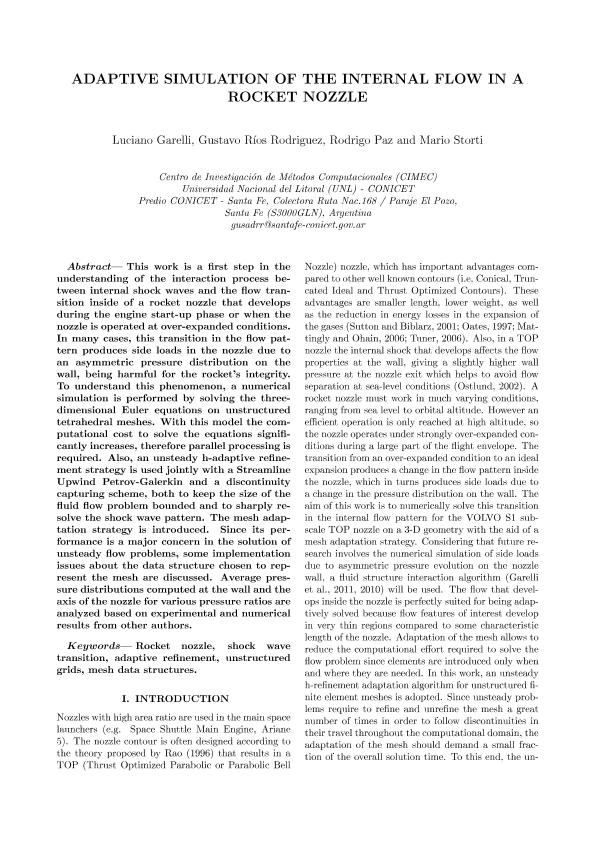Artículo
Adaptive Simulation of the Internal Flow in a Rocket Nozzle
Fecha de publicación:
07/2014
Editorial:
Planta Piloto de Ingeniería Química
Revista:
Latin American Applied Research
ISSN:
0327-0793
e-ISSN:
1851-8796
Idioma:
Inglés
Tipo de recurso:
Artículo publicado
Clasificación temática:
Resumen
This work is a first step in the understanding of the interaction process between internal shock waves and the flow transition inside of a rocket nozzle that develops during the engine start-up phase or when the nozzle is operated at over-expanded conditions. In many cases, this transition in the flow pattern produces side loads in the nozzle due to an asymmetric pressure distribution on the wall, being harmful for the rocket´s integrity. To understand this phenomenon, a numerical simulation is performed by solving the three-dimensional Euler equations on unstructured tetrahedral meshes. With this model the computational cost to solve the equations significantly increases, therefore parallel processing is required. Also, an unsteady h-adaptive refinement strategy is used jointly with a Streamline<br />Upwind Petrov-Galerkin and a discontinuity capturing scheme, both to keep the size of the fluid flow problem bounded and to sharply resolve the shock wave pattern. The mesh adaptation strategy is introduced. Since its performance is a major concern in the solution of unsteady flow problems, some implementation issues about the data structure chosen to represent the mesh are discussed. Average pressure distributions computed at the wall and the axis of the<br />nozzle for various pressure ratios are analyzed based on experimental and numerical results from other authors.
Archivos asociados
Licencia
Identificadores
Colecciones
Articulos(CIMEC)
Articulos de CENTRO DE INVESTIGACION DE METODOS COMPUTACIONALES
Articulos de CENTRO DE INVESTIGACION DE METODOS COMPUTACIONALES
Citación
Garelli, Luciano; Rios Rodriguez, Gustavo Adolfo; Paz, Rodrigo Rafael; Storti, Mario Alberto; Adaptive Simulation of the Internal Flow in a Rocket Nozzle; Planta Piloto de Ingeniería Química; Latin American Applied Research; 44; 3; 7-2014; 267-276
Compartir




